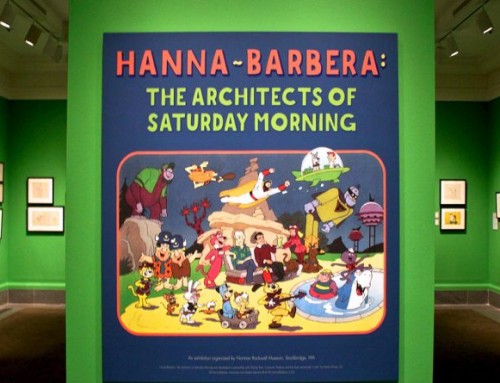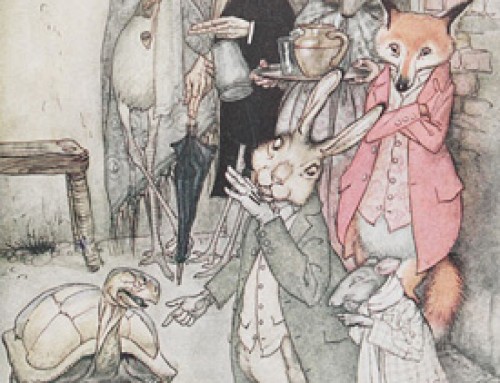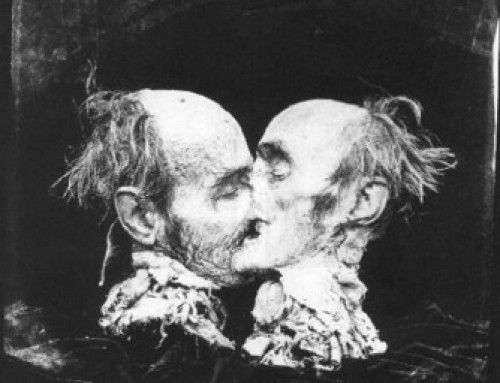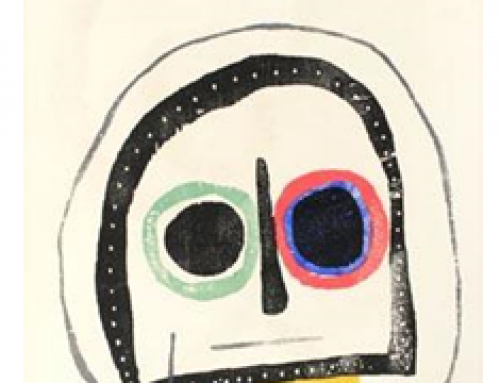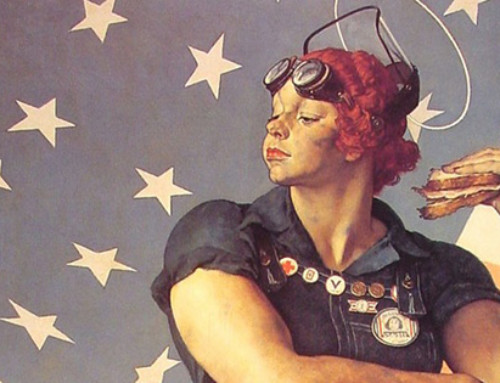By Sara Lautman, grad student MICA’s MFA Illustration Practice, Fall 2013, Critical Seminar, Final Paper
20th Century Cartoon Advertising Mascots
Licensing and Merchandising Cartoon Characters
Post WWII America was an expeditious breeding ground for consumerism. What initially followed, then quickly led, those patterns of consumption was a thoroughly profligate wall of commercialism. The Greatest Generation, flush with war bonds and GI bill perks, buried their PTSD deep in a nationwide binge on pre-fab homes, baby-having, and constantly celebrating the holiday of Christmas by drinking Coca-Cola. This was the social and economic environment in which creative advertising gained the audience and capital to become a major industry.
The state of the union was fraught, sure, but for young creatives, advertising was a good place to be: a good place to monetize skills in visual and verbal art, and a good way—maybe the most effective way ever—to make your work encroachingly public.
Not every idea was a perfect match with its marketing goal, but since advertising and ephemeral media were intimate bedfellows, disposability reigned. This was an interesting situation for the art involved because it allowed room for improbable concepts and artwork that would never have passed muster in the spheres of art or journalism to hit newsstands (and grocery shelves) nationally. Much more so than editorial art, advertorial art was often under conceived and had a tendency toward the bizarre. The rapidity of production often turned out odd, poignantly beautiful products. Package design and marketing campaigns are telling historical artifacts that belie a great deal about the unconscious disposition of time and place in which they were produced.
That cartoon spokes-characters for popular products like boxed cereal, paper towels, and peanuts, who were charismatic enough to become celebrities is a credit to their designers. It also points to fundamental social needs and tendencies in the general population. Why would three talking elves make people buy one kind of cereal instead of another? It may seem irrational, but consider the alternative: cereal hucksters made of flesh and bone, with parents, memories, private pain. Nothing could be more repugnant!
Cartoon characters, being radically idealized versions of humans themselves, are well-suited to inspire emotional reactions.
Since cartoon drawings by design approximate and distort rather than represent, it’s much easier to project identity onto them. That makes them more widely relatable—even preferable company to naturalistic human faces, whose uniqueness precludes projection of identity. It’s a relief for people to not have to relate to people, because other people can be opaque and difficult. Whatever your level of social development, cartoon people are easier to like than real people. This odd glitch of empathy has been exploited in commerce and art with consistent success.
In the years between Hearst and Pulitzer’s Yellow Kid wars and Planters’ choice to favor Mr. Peanut with the company of “PB Doug,” a totally outrageous stunt double who is also a peanut, there have been legions of cartoon mascots in the United States and worldwide. Building a full inventory is an obsessive scholar’s errand in and of itself. I’ll discuss a selected group here. Some were influential, some repugnant, some so famous that they ended up transcending, in an appropriately Warholian way, their qualifiers. Like Kanye West or the Kardashian sisters.
Bazooka Joe: From Pornography to Boring Freebie
Joe is the invention of the cartoonist and illustrator Wesley Morse. Morse cut his teeth as an artist making Tijuana Bibles, an early form of easily reproducible illustrated pornography available in the U.S from the 20’s through the 60’s. Tijuana Bibles were fully rogue, flagrantly ignoring libel laws by casting famous sports and Hollywood stars in pornographic stories. Today they are considered a precursor to underground comics of the 60’s.
Woody Gelman, the head of product development at Topps playing cards was looking for a cheap premium to sell more gum. He pitched the idea of Bazooka Joe and the Gang to Morse and the character debuted in 1953.
In the tradition of other strips that featured a motley gang of central characters, like Gene Byrnes Re’glar Fellers (syndicated 1917-1949), and Just Kids by Ad Carter, Bazooka Joe and the Gang cast a wide net. Between Pesty, Mort, Hungry Herman, Jane (Joe’s girlfriend), Toughie, and Walkie-Talkie, there was bound to be at least one character that appealed.
The mythology of Joe’s world is strangely flat. There is no origin story. Although his eye patch intrigues, there is no known explanation as to how Joe lost his eye.
The comics had a mild, inoffensive appeal that was about as memorable as the product itself. In 2012, Bazooka announced that Joe comics would no longer come bundled with their chewing gum—apparently consumer surveys showed a big thumbs down for Joe. While 2009 saw a screenplay for a feature-length Bazooka Joe movie in development, executives must have taken the same cue. Nothing was ever produced.
First Licensing Fiasco: The Yellow Kid
Richard Outcault’s Yellow Kid was conceived as a satiric cartoon character in the popular strip Hogan’s Alley, but ended up a symbol of chaos in commercial character licensing.
Outcault’s first strips featuring the Kid ran in Truth magazine in 1894. One popular gag, Fourth Ward Brownies was bought and reprinted in Joseph Pulitzer’s New York World, a more widely distributed newspaper where Outcault worked a day job as a technical artist. Outcault’s most popular strip, Hogan’s Alley, began running a month later, full color, full page. The tenor of the strip was political, satiric—Outcault’s characters were tenants of Depression tenement ghettos. That’s why the Kid’s breakout success as an endorsement mascot for innumerable consumer products was so laughable. The Yellow Kid sold cigarettes, alcohol, cookies, toys, buttons, cigars, ladies’ accessories, everything. Not that he himself would ever have been able to afford any of these creature comforts. The Kid couldn’t even afford shoes to wear on his feet. The reading public, for their part, was more than receptive to a character who reflected socioeconomic and social tensions so non-confrontationally.
In 1896, William F. Hearst drove a dumptruck of money up to Outcault’s house, and persuaded the middle-income cartoonist to join the staff of the New York Journal American. Outcault continued to draw the characters that had made him wealthy. But since he had never copyrighted the Yellow Kid, Pulitzer just hired someone else—a cartoonist (and later painter) named George Luks—to pick up the pen where Outcault had left off. The two papers were locked in stiff competition, each trying to outdo the other in sales from one edition to the next. It was common for either paper to sensationalize or even embroider stories to create an eye-catching headline. As if that wasn’t journalistically irresponsible enough, the plight of the corrupted, doppelgang Yellow Kid only underscored Hearst and Pulitzer’s disregard for integrity of product. After several new iterations, the Kid was retired in 1898, when both papers started to back down. His legacy in the history of commercialism and newspaper comics represents the prioritization of profit over product. Eventually, as cartoonists and character creators became more careful about protecting their inventions, and purely commercial journalism was compartmentalized, this phenomenon assimilated into various forms of media. Charles Schultz’s cheerfully promiscuous licensing of the Peanuts gang, for example, is dispiriting, but not unfamiliar.
Some artists stand in pointed opposition to licensing. Bill Watterson, the creator of Calvin and Hobbes, a widely syndicated and beloved strip that ran in hundreds of American newspapers from 1985 to 1995, was vocal about eschewing merchandising opportunities. Watterson believed that lending the images of Calvin and Hobbes to products for a profit would corrupt the purity of their world and poison the joy he took in creating it. Watterson’s principles are those of an auteur: as writer, designer, and illustrator of his comics, his protectiveness over their integrity is relatable, appropriate, and deeply healthy for both art and artist.
There are other character creators, however, whose commercialism is just as appropriate to their particular goals.
Jim Davis and Garfield
Garfield the Cat, second only to Charles Schultz’s Snoopy, is probably the most recognizable comics character in the world. This is not an accident.
Jim Davis began his career not as a cartoonist, but as an adman. Before he dropped out of Ball State, Davis majored in art and business. He cannily evaluated the market before creating Garfield. His efforts in developing the strip, as he described them in a 1982 interview with David Shapiro at the Washington Post were “a conscious effort to come up with a good, marketable character.” He saw that animals were more attractive to merchandisers than humans. “Snoopy is very popular in licensing. Charlie Brown is not.” Davis saw plenty of strips with dogs in them. Filling the gap in the cute kitty cat market was low-hanging fruit. He grabbed it.
An illustrative footnote to his legacy is that Jim Davis has been inducted into the Licensing Merchandiser’s Hall of Fame, but never the hall of fame in the International Museum of Cartoon Art. Since Davis’s role as artist and draftsman in the Garfield machine was largely delegated as soon as the money to pay an art department appeared, it’s safe to assume that his ego made it through the slight unbruised.
Davis always took an active, even an aggressive role in marketing the juggernaut. Paws, Inc., the privately held company designated to handle the licensing arm of Davis’s enterprise, was established only three years after the first Garfield strips ran. Initially, Paws, Inc. did all the creative work for Garfield products while United Features Syndicate ran the business end, but by 1994 Paws had bought the licensing rights from his own syndicate. It was a 20 million dollar investment.
Davis was greedy and smart. In the late 80’s, when the popularity of plush Garfield dolls with suction cups on their paws had progressed to the point where thieves were breaking into cars to take them, Davis had them pulled from the shelves. He didn’t want the Garfield bubble to pop. And, for better or for worse, it didn’t. Garfield’s international popularity, although it may have peaked 30 years ago, never collapsed under its own weight. His collections have been on the NY Times bestseller list at least a dozen times, his Macy’s Thanksgiving Day parade balloon is as iconic a presence at the parade as Santa Claus. He was on the cover of People magazine in 1982.
Advertising and Character Design Today
The ways that artists choose to market their characters, and whether they were designed as marketing shills in the first place, shows an influence on both the design and the way it is received by the public. Characters with an existing relationship to the audience are at an obvious advantage when it comes to selling product. The Simpsons spots for Nestles Butterfinger in the early to mid-90’s are rumored to behave been pointed to as the deciding factor in executive decisions at Fox to keep the show on. Without those commercials, the show, now a classic, may never have seen a fourth, fifth, or sixth season, let alone a twenty-sixth.
So merchandising has its obvious advantages. In the case of an artist like Bill Watterson, rejecting that dimension made sense. Human’s’ relationship to cartoon characters has always had a Pygmalion aspect to it, in that our creations, however flatly conceived, still hold exploitable seductive power.
Bibliography
“Badass Digest.” Badass Digest RSS. N.p., n.d. Web. 17 Dec. 2013.
“Cartoon.jpg.” Cartoon.jpg. N.p., n.d. Web. 17 Dec. 2013.
“Calvin and Hobbes at Martijn’s – Bill Watterson.” Calvin and Hobbes at Martijn’s – Bill Watterson. N.p., n.d. Web. 17 Dec. 2013.
“Bazooka Joe.” Wikipedia. Wikimedia Foundation, 12 Dec. 2013. Web. 17 Dec. 2013.
“Honey Smacks.” Wikipedia. Wikimedia Foundation, 12 Sept. 2013. Web. 17 Dec. 2013.
“List of American Advertising Characters.” Wikipedia. Wikimedia Foundation, 30 Nov. 2013. Web. 17 Dec. 2013.
“Why We Don’t Hate Garfield.” Slate Magazine. N.p., n.d. Web. 17 Dec. 2013.


